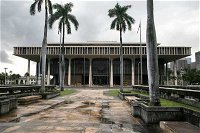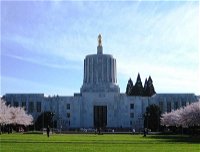
State Capitol Revolution Trivia Quiz
Architecture of State Capitols
In this quiz, see if you can identify ten different state capitols. There will be four capitols with Neo-Classical designs (like the U.S. Capitol), four capitols with Art Deco designs and two capitols with unique designs.
by RedHook13.
Estimated time: 3 mins.









